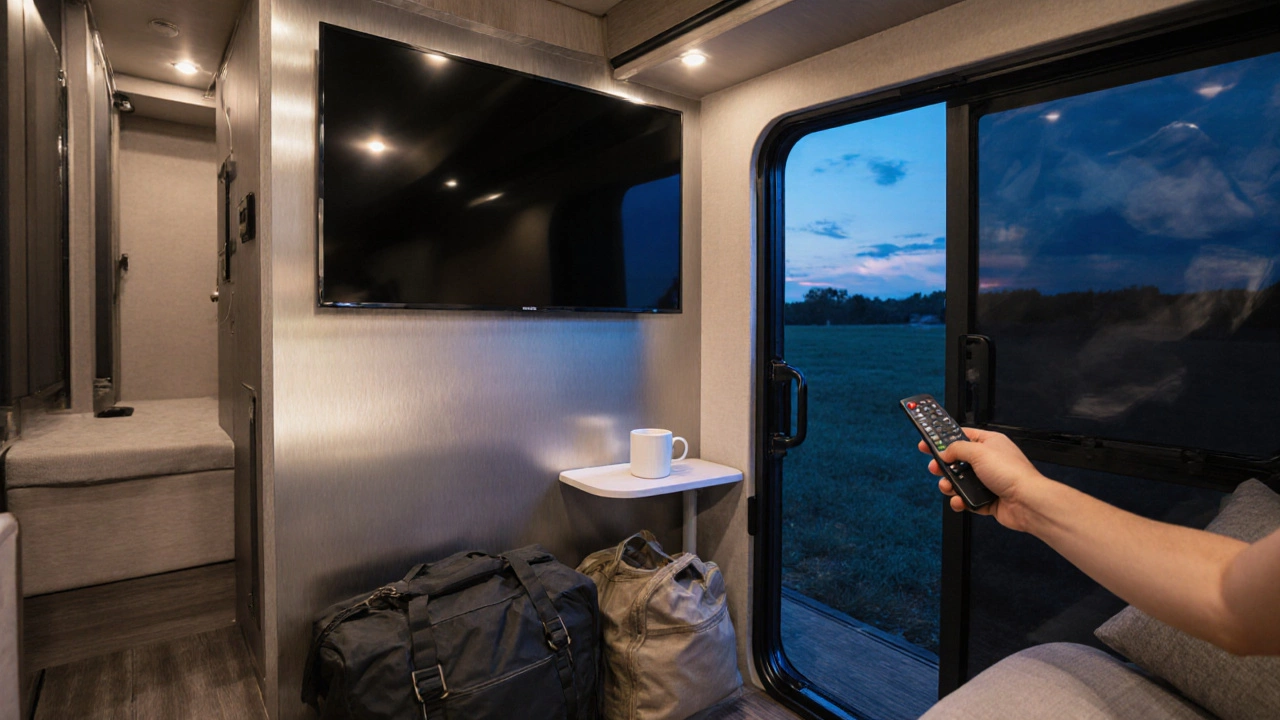Motorhome TV: The Essential Road‑Trip Companion
When planning a mobile adventure, motorhome TV, a television built to run off a motorhome’s low‑voltage system. Also known as RV TV, it gives you movie nights without stopping at a hotel. 12‑volt TV units are the most common, because they match the 12 V DC output most motorhomes provide. The battery is the heart of that system – its capacity decides how long you can watch before the engine runs. A well‑matched motorhome or RV will have the right inverter or direct‑DC video input to keep the screen alive. In short, motorhome TV encompasses entertainment on the road, requires a stable 12‑volt power source, and benefits from smart battery management.
Key Factors for Choosing a Motorhome TV
First up, power. Most modern 12‑volt TVs draw between 30 and 70 W, which translates to 2.5–5 Ah per hour on a 12 V battery. If you plan to binge‑watch for three hours nightly, you’ll need a battery bank that can spare at least 15 Ah without draining below 50 % depth‑of‑discharge. Many travelers opt for a dual‑battery setup: one for engine start‑up, another dedicated to leisure loads like the TV. Adding a solar panel can offset the drain, especially on sunny days. Remember, the inverter isn’t always necessary – true 12‑volt models plug straight into the battery, reducing conversion loss and heat. Second, size and resolution matter. A 32‑inch screen fits most cab‑over or mid‑size motorhomes without sacrificing headroom, while a 43‑inch panel offers a cinema feel in larger rigs. Look for LED panels with at least 1080p resolution; they shine brighter in daylight and consume less power than older LCDs. Some units even include Bluetooth speakers, letting you skip the separate sound system. If you travel to remote areas with weak signal, a TV with built‑in DVB‑T2 or satellite capability saves you from hunting for a Wi‑Fi hotspot. Third, integration with existing RV electronics simplifies wiring. Many motorhomes feature a 12‑V accessory socket near the dashboard or kitchen area; using that spot avoids routing new cables through the walls. If your rig has a central control panel, you can hook the TV into the same circuit that powers your fridge or lights, keeping everything on a single fuse. Always check the amp rating of the fuse – a 10 A fuse works for a 40 W TV, but a 5 A fuse could trip during peak draw. Fourth, durability. Road vibrations and occasional bumps demand a TV with sturdy mounting brackets. Look for brackets that bolt to the vehicle frame rather than just the interior panel. Some manufacturers sell swivel mounts, so you can tilt the screen for lounge seating or for a cosy bed‑in‑the‑rear layout. Weather‑proof models exist too; they survive occasional rain splashes when you park under open skies. Finally, user experience. Remote controls that work through thick walls are a plus, as are built‑in USB ports for plugging a flash drive or external hard drive. Many 12‑volt TVs run Android or a custom OS, letting you stream Netflix, Disney+, or locally stored movies. If you’re a tech‑savvy traveler, look for HDMI‑ARC support to connect a soundbar, and Ethernet ports for stable internet when you’re at a campsite with wired hookups.
All these pieces – power, size, integration, durability, and smart features – link back to the central idea that a motorhome TV isn’t just a screen; it’s a component of your mobile lifestyle. Choosing the right combo means less battery anxiety, smoother setup, and more time enjoying the view outside your window.
Below, you’ll find a curated collection of articles that walk through legal camping rules, seasonal tips, bathroom hacks, and more – all the practical knowledge you’ll need to pair with your new motorhome TV and make every road trip feel like home.
Can a Regular TV Run in Your Motorhome? Practical Answers & Tips
Learn if a regular flat‑screen TV can run in a motorhome, covering power needs, wiring steps, common issues and when to choose a 12‑V RV TV.
